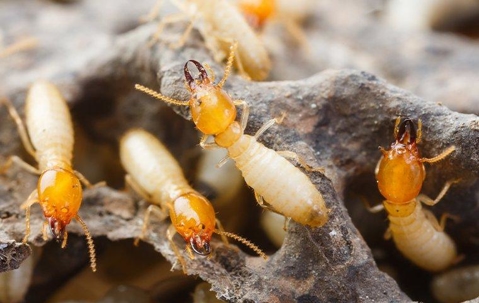Late summer can finally afford us the time to do the cleaning up we’ve been putting off all year long. Whether we’re clearing out the attic, organizing the basement, or rearranging the furniture, we might discover an unwelcome surprise. Termites get busiest in the summer months, chewing networks into the wood of houses. Mesa pest control experts know these pests can go unnoticed for a long time.
Methods Of Termite Control In Mesa
A termite problem is not a do-it-yourself endeavor. Due to this insect’s ability to burrow complex networks throughout the house, it can be hard to get them all on your own. Even if you manage to eradicate a home invasion, these insects can simply retreat to their subterranean lairs. They can lay in wait and then reenter a house through new or old avenues. Professionals might use baiting, sprays, and fumigation to fight large infestations, but these treatments can be ineffective or even dangerous if improperly applied.
Your best bet to avoid termite damage is to prevent infestations. You can:
- Make sure soil and vegetation is not touching any wood on the exterior of the house. These can act like bridges.
- Fix leaky pipes. Termites love moisture.
- Keep firewood on a raised platform far from the house.
- Seal cracks and crevices that allow them to enter.
Looking for these pests is an important habit to get into. A termite colony on your Mesa property will hardly ever be obvious. You can check crawl spaces, attics, wood structures, and basements. If you see bubbling paint on wood, bulbous sections of wood, or easily breakable wood it might mean termites have hollowed out the inside and accumulated moisture at these sites.
How Often Should You Treat A House For Termites?
Whether your house has had a prior infestation or not, you’ll want to have professionals inspect your house on an annual basis. Because this pest works in hidden areas, a yearly inspection will catch them before damage can become irreparable. After some termite treatments, houses can be exempt from future infestations for several years, depending on the method used. At Pro Active Pest Control, we recommend planning with a pest control professional to see what your property needs in terms of protection.
What Is Considered During A Termite Damage Inspection?
During a termite inspection, a specialist will scour the house for evidence of termite damage. Usual inspections take 45 minutes to an hour, depending on the size of the property. Certain signs of termites a professional looks for are:
- Wood damage
- Shed wings that signify reproductive termites
- Debris and piles of sawdust
- Mud tubes
- Peeling paint
Mud tubes are constructions of moisture and dirt that termites build to access new areas. Since they prefer to be hidden, they make these tunnels from soil to wood and are usually plentiful along the foundation of a house. Wood damage is always with the grain of the material, so a screwdriver can probe into the thinned exterior to expose their tunnels. Sometimes the mere press of a thumb can break the wood, too. As there are different kinds of termites that don’t accumulate moisture, an infestation may be hard to identify without professional help.
Termite Control In Mesa Made Simple
When homeowners discover termites, the worst action they can decide to take is using chemicals on their own. Insecticides can be harmful to people, and if you don’t use them responsibly, you may be jeopardizing the health of loved ones without successful elimination of the problem. Termites are crafty, creating networks between woodwork and deep underground.
At Pro Active Pest Control, we have advanced technology for deep subterranean termite treatment in Mesa. We pride ourselves on keeping the community safe and informed. Contact us if you have an infestation.

